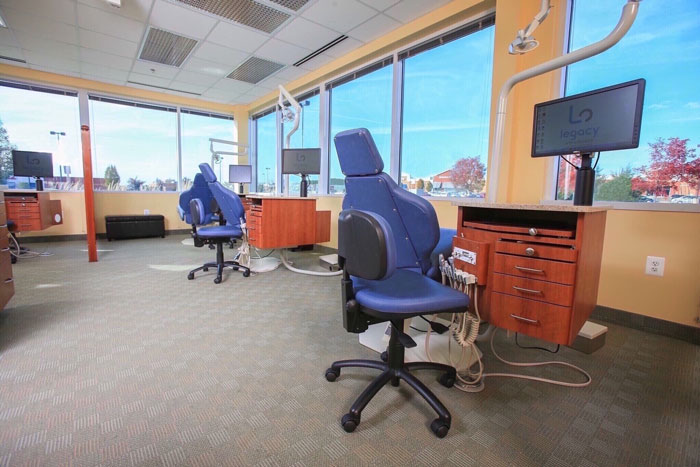The Basic Principles Of Legacy Orthodontics
Table of ContentsLegacy Orthodontics Can Be Fun For AnyoneHow Legacy Orthodontics can Save You Time, Stress, and Money.All about Legacy OrthodonticsNot known Factual Statements About Legacy Orthodontics Not known Details About Legacy Orthodontics
At Advanced Orthodontics, we offer patients with a holistic therapy experience. Additionally, we offer adjustable therapy routines, flexible payment options and an enjoyable, satisfying experience. leesburg clear braces. Telephone call ( 480) 357-4900 today for more details and schedule an appointment.An orthodontist is a dentist educated to diagnose, avoid, and deal with teeth and jaw irregularities. They deal with existing conditions and are educated to recognize issues that may create in the future. Orthodontists collaborate with individuals of every ages, from kids to adults. Individuals often associate a perfect smile with healthiness.
Malocclusion, or misaligned teeth, can bring about oral concerns, including dental cavity, gum illness, and challenging or unpleasant chewing. Not everybody is born with straight teeth. If you have a bad bite or huge rooms between your teeth, you may want to get in touch with a dental practitioner focusing on orthodontic treatment.
What Does Legacy Orthodontics Do?
( Photo Credit History: DigitalVision/Getty Images) Orthodontists use taken care of and removable dental devices, like dental braces, retainers, and bands, to transform the placement of teeth in your mouth. Orthodontic therapy is for oral abnormalities, including: Crooked teethBite troubles, like an overbite or an underbiteCrowded teeth or teeth that are as well far apartJaw misalignmentThe goal of orthodontic treatment is to improve your bite.
While you may believe of orthodontists as generally for children or teens that need braces, they can remedy dental issues at any kind of age. Orthodontists attend college, oral school, and orthodontic college.
, but not all dentists are orthodontists. They focus on 2 areas: Exactly how to correctly and safely relocate teeth Exactly how to appropriately direct advancement in the teeth, jaw, and faceOnce an orthodontist has finished training, they have the choice to end up being board accredited.
The 9-Second Trick For Legacy Orthodontics
Imbalance, or malocclusion, is one of the most common reason people see an orthodontist. It is hereditary and is the result of size differences in between the top and reduced jaw or between the jaw and teeth. Malocclusion causes tooth overcrowding, an askew jaw, or irregular bite patterns. Malocclusion is typically treated with: Your orthodontist affixes metal, ceramic, or plastic square bonds to your teeth.
Some individuals require a headgear to help move teeth into line with stress from outside the mouth. A retainer is a custom device that keeps your teeth in place.
They're most frequently used on children. They can produce additional area in the mouth without needing to draw teeth. If you have a significant underbite or overbite, you may need orthognathic surgical treatment (likewise called orthodontic surgery) to lengthen or shorten your jaw. Orthodontists utilize cords, surgical screws, or plates to sustain your jaw bone.
You may require to see an orthodontist if you have: Crowding or otherwise sufficient area for all of your teethOverbite, when your top teeth come over your bottom teethUnderbite, when your base teeth are also far forwardSpacing or problems with gapsCrossbite, which is when your upper teeth fit behind your base teeth when your mouth is closedOpen bite or an upright void between your front base and top teethMisplaced midline, when these details the center of your base and upper teeth do not align Remedying a dental malocclusion can: Make biting, eating, and talking easierImprove the proportion of our face and your overall appearanceEase pain from temporomandibular joint conditionsSeparate your teeth and make them easier to clean up, aiding protect against dental caries or cavities It's frequently a dentist who first notifications misaligned teeth during a routine examination.
The Best Guide To Legacy Orthodontics

Throughout your first orthodontic appointment, you'll likely have: An oral examPhotos taken of your face and smileDental X-raysPanoramic (360 level) X-rays of your face and headImpressions to produce molds of your teethThese examinations will aid your orthodontist know how to wage your therapy. braces. An orthodontist is a dental expert who's had training to treat your teeth and jaw
An orthodontist is focused on your bite, so something like a broken tooth would be handled by a dental expert. Orthodontists are concentrated on your bite, or the method your teeth fit with each other, and the straightness of your teeth.
Ever asked yourself exactly how celebs always appear to have completely aligned teeth? The solution frequently lies in the experienced hands of an orthodontist. What precisely does an orthodontist do? Orthodontists are dental experts who concentrate on correcting abnormalities in the teeth and jaws. Their know-how goes beyond simply creating a gorgeous smile; it includes boosting your general oral health and wellness and function.
Legacy Orthodontics Can Be Fun For Anyone

, orthodontists have a varied toolkit at their disposal. These tried-and-true braces use a system of brackets bonded to the teeth and attached by cords.
Clear aligners, like Invisalign, are a prominent alternative for clients looking for a much more discreet therapy alternative. These removable trays are customized to gradually change the teeth's position. Headgear might be used together with braces or aligners to apply additional targeted pressures, particularly for dealing with jaw inconsistencies. In cases of narrow jaws, palatal expanders can be made use of to produce space for proper tooth alignment.